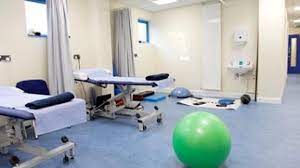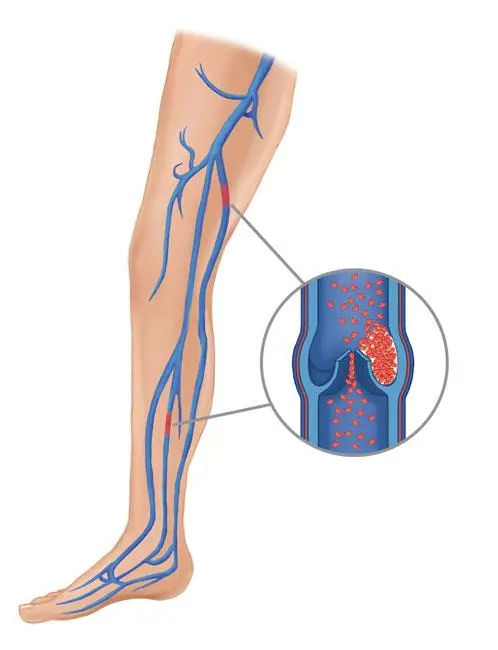What is Physical Therapy?
Physical therapy (PT) is care that aims to relieve pain and help you function, move and live better.
Physical therapy include:
- Assessing people with disabilities, functional limitations, disabilities or other health-related conditions for diagnosis, prognosis, and intervention.
- Reducing damage and limiting performance by designing, implementing, and refining therapeutic interventions.
- Prevention of injury, performance limitations, and disability, which includes the promotion and maintenance of fitness, health, and quality of life for people of all ages.
- Involvement in consultation, education, and research.
What is a Physical Therapist?
Physical therapists are any support staff who perform scheduled tasks related to the functioning of the physical therapy service. In general, this is a person trained under the guidance of a physical therapist who performs prescribed and controlled activities related to physical therapy.
Anyone can be a physical therapist. If a person does not have a license to become a physical therapist or a physical therapist under the PT Act, they are assistants. The following staff members are considered PT assistants:
Athletic coaches
Exercise Experts
Personal Trainers
Massage Therapists
Kinesiologists
Physical Therapist & Physical Therapist Assistant Students
Some people are unlicensed or have degrees
What does a physiotherapist do?
PTs provide services that help restore function, improve mobility, relieve pain, and prevent or limit chronic physical disability in patients with injuries or diseases. PTs work closely with patients to restore, care for, and promote resilience throughout their lives. Patients may include accident victims and people with disabilities such as low back pain, fractures, head injuries, arthritis, heart disease, and brain damage.
PTs assess patients’ medical history, and evaluate and measure their strength, range of motion, balance and coordination, posture, muscle function, respiration, and motor function. They also determine a patient’s ability to stand on their own two feet and resonate within a community or workplace after an injury or illness. Finally, they develop treatment plans that explain the treatment plan, its purpose, and the expected outcome.
You may be referred to a physiotherapist for a checkup and / or treatment. Physicians accept referrals from doctors, dentists, senior nurses, paramedics, orthopedic surgeons, and chiropractors.
You can also independently seek the opinion of a physical therapist. Referrals are not required for physical therapy testing.
PTs perform parts of physical therapy procedures and related activities, as directed by the primary care physician (PT). PTs help patients with mobility problems due to injury or disease, by assisting PT with treatments designed to improve mobility, relieve pain, and prevent or reduce permanent physical disability. Patients may include accident victims as well as people with temporary and long-term disability, such as low back pain, fractures, head injuries, arthritis, heart disease, and cerebral palsy.
What to expect?
A physiotherapist helps care for patients in all phases of healing, from the initial diagnosis to the regenerative and preventive phases of recovery. Physical therapy can be a stand-alone option or can support other treatments.
Some patients are referred to a physiotherapist by their doctor, while others seek therapy on their own.
The World Confederation for Physical Therapy states that a physical therapist receives the training that allows them to:
- perform a physical examination and evaluate the person’s movement, flexibility, muscle and joint movement and performance, including ascertaining their health history
- provide clinical diagnosis, prognosis and plan of care with short and long term goals
- perform physiotherapy treatment and intervention
- give recommendations for self-management, including exercises one can do at home
In addition to physical manipulation, physical therapy treatment may include:
- Iontophoresis: Uses an electric current to deliver certain medications, such as topical steroids. This can reduce the presence of inflammation.
- Electrical stimulation (e-stim): There are generally two types of e-stim. Transcutaneous electrical nerve stimulation reduces pain. In contrast, neuromuscular electrical stimulation works to stimulate muscle motor units to improve muscle engagement.
- Light therapy: This involves using special lights and lasers to treat some medical conditions.
- Heat, moist heat, and cold therapy: These can be beneficial for a number of conditions.
Common conditions in which physical therapy can help
Physical therapists can provide complementary treatments for a wide variety of medical conditions depending on their specialty.
Although physical therapists cannot directly and independently treat medical conditions other than purely musculoskeletal conditions, they work to optimize recovery or educate a person on how to optimize their movement patterns.
Some conditions that could be benefited from physical therapy are given below:
- Conditions that affects the hand, like trigger finger and carpal tunnel syndrome
- Cardiopulmonary conditions such as chronic obstructive pulmonary disease, heart failure and cystic fibrosis after myocardial infarction
- Pelvic floor dysfunction and women’s health, including urinary incontinence and lymphedema
- Musculoskeletal dysfunction, including rotator cuff tears, back pain and temporomandibular joint disorders
- Pediatric conditions, including cerebral palsy and muscular dystrophy
- Sports-related injuries such as concussions and tennis elbow
- Neurological conditions such as stroke, spinal cord injury, Parkinson’s disease, vestibular dysfunction, multiple sclerosis and traumatic brain injury
- Skin conditions or injuries such as burns, diabetic ulcers and wound care
Physical Therapy: Types
There are many types of physical therapy that therapists often choose to specialize. These types include:
- Geriatric physical therapy: Can help older adults who develop conditions that affect their mobility and physical function, including arthritis, osteoporosis, Alzheimer’s disease, hip and joint replacement, balance disorders, and incontinence. This type of intervention aims to restore mobility, reduce pain and increase the level of physical fitness.
- Orthopedic Physical Therapy: Treats musculoskeletal injuries involving muscles, bones, ligaments, fascia, and tendons. It is suitable for conditions such as fractures, sprains, tendinitis, bursitis, chronic health problems and rehabilitation or convalescence after orthopedic operations. Patients can undergo treatment with joint mobilizations, strength training, manual therapy, mobility training, and other modalities.
- Vestibular therapy: Aims to treat balance problems that may result from inner ear disease. Vestibular physical therapy includes a variety of exercises and manual techniques that can help patients regain balance and coordination.
- Decongestant therapy: This can help drain fluid build-up in patients with lymphedema and other conditions that involve fluid accumulation.
- Pelvic floor rehabilitation: This can help treat conditions that affect the pelvic floor, such as urinary or fecal incontinence, urinary urgency, and pelvic pain due to injury or surgery or certain conditions.
- Neurological physical therapy: This can help people with neurological conditions such as Alzheimer’s disease, cerebral palsy, brain injury, multiple sclerosis, spinal cord injury, Parkinson’s disease and stroke. Treatment may be aimed at increasing limb sensitivity, improving movement patterns, managing tone, improving strength, and promoting balance.
- Cardiovascular and Pulmonary Rehabilitation: This can benefit people affected by certain cardiopulmonary conditions and surgical procedures. Treatment might increase muscular and cardiovascular endurance and stamina.
- Wound care therapy: This can help ensure that the healing wound receives adequate oxygen and blood through improved circulation. Physical therapy can also include the use of e-stim, manual therapies, compression therapy, and wound care.
Physical Therapy: Benefits
It depends on the reason for the treatment, the benefits of physical therapy may include:
- pain management with reduced need for opioids
- avoid surgery
- improved mobility and movement
- recovery from injury or trauma
- recovery from stroke or paralysis
- fall prevention
- improved balance
- solving age-related health problems
A sports therapist can help an athlete maximize their performance by strengthening specific body parts and using muscles in new ways.
A physical therapist or other healthcare professional can advise individuals about benefits specific to their personal medical history and their need for treatment.




One Comment